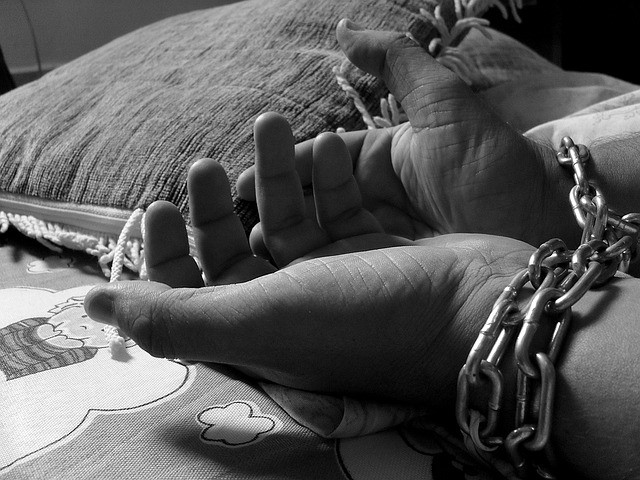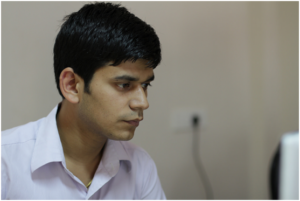Human Trafficking: The Dark Side Of Finance

Humanity has long suffered exploitation, coercion, and threat throughout history. Classical theorists Karl Marx, and Friedrich Engels, have described power structures and how they contribute to the oppression of the poorer to maintain power status among the wealthier class of society. Karl Marx described this concept in terms of class distribution, i.e., the bourgeoisie (the elitists) exploiting the proletariat (the working class) for their benefit and to maximize their wealth. This social perspective on class discrimination and the theory of oppression provides insight into the topic under discussion; human trafficking.
Human Trafficking In Modern World
Human trafficking became highlighted after World War II, although it dates back to the history of mankind. With the establishment of an international organization, the United Nations, this grave phenomenon was brought into the spotlight. Various international legislations have been carried out to curb this heinous trade and business. Human trafficking, or modern slavery, is the process of recruiting, transporting or coercing people through deception or fraud into the work to gain profit. It involves forced child labor, child abuse, women trafficking, forced organ removal, forced marriages, and forced work in dangerous environments.
Human trafficking is deep-rooted in various socio-economic factors. It can happen in various forms at multiple levels, from the micro level to the macro level. For example, at the micro level, it can be a story of forced marriage, or at the macro level, a multinational firm may be found involved in human trafficking through forced labor. Many organizations are offering a free course to identify human trafficking and educate people on this phenomenon. These courses and training inculcate the knowledge of identifying the industry and statutory expectations regarding human trafficking and how to perform transaction analysis, monitoring divestment, and derisking.
Statistics About Human Trafficking
The footprints of human trafficking and modern slavery have been found in multiple sectors and industries. Where on the one side, the free market economy has flourished and improved the standard of living, the abundance of money brought many obnoxious evils, and one of them is human trafficking. As per the statistics of the International Labor Organization (ILO), 49.6 million people were living in modern slavery in the year 2021, either in the form of forced labor or forced marriage. In the year 2014, proceeds from forced labor were estimated to be USD 150 billion, as per ILO. This figure has surged post-COVID -19 due to increased vulnerability among the already marginalized communities of the world, i.e., children, women, and immigrants. It means that an economy worth billions of USD is unregulated. And the money generated through it is black or illicit money earned through human trafficking and modern slavery. But how is this money being transferred and contributed to generate more profits for the businesses involved in human trafficking? The question leads to the concept of money laundering and the role of financial institutions in the whole process.
Money Laundering and Human Trafficking
Financial institutions have a key role in the identification and tracking of human trafficking footprints. Financial institutions like stock exchanges, financial brokers, and banks often become the source of money laundering that is directly associated with terrorism and human trafficking. International organizations like International Monetary Fund (IMF) and the Financial Action Task Force (FATF) are two main international bodies working on the inter-governmental level to formulate international policies and standards to fight terrorism and money laundering. FATF 40+9 Recommendations are dedicated to this objective. These recommendations suggest governments formulate policies related to Anti-Money Laundering and Counter-terrorism Financing (AML/CTF). Money laundering is the process of transferring illicit money earned through illicit sources like criminal activities through legal and financial channels by hiding or concealing the true origins of the money. It means the money trail is broken or marred at some point to disguise the laundered money as fair money. AML/CFT policy makes the financial institutions comply with Customer Due Diligence (CDD). Customer Due Diligence requires a financial institution to properly identify a customer or the beneficial owner and to know the source and the purpose of the money being transferred. In the case of a business, CDD requires knowing the purpose of the business, whether it is registered in the respective authorizing body or it is not a banned or black-listed organization. In short, it fully lies on a financial institution to conduct thorough CDD before entering into the business with that individual or an organization. Financial service providers also need to carry out scrutiny among the investors as well.
Another important element in the implementation of AML/CFT is that it requires financial institutions and other designated non-financial businesses (DNFBPs) to report any suspected financial transaction. This type of transaction can either be huge in amount or doesn’t match the customer’s profile. In such cases, FATF requires governments to establish Financial Intelligence Units (FIUs) where these suspicious transactions may be reported and monitored. For a transparent state of affairs, FIUs in any country must work autonomously without any interference. Since human trafficking is related to big money, there is a high probability that this money may be used to buy corrupt officers to cover up such financial transactions.
Nowadays, financial institutions are actively engaging in the efforts against human trafficking and modern slavery. Many designated officers like compliance officers, risk managers, ESG (Environmental Social Governance) specialists, technology officers, and industry consultants are assigned to ensure that organization’s practices are in line with international policies and SOPs.
Conclusion:
Human trafficking is that dark side of the glitzy rich modern world that only cares about the growing profits at the cost of the lives of millions. They suffer the loss of freedom, self-esteem, and dignity. The untold stories of those suffering behind the doors need to be heard. Governments, agencies, and human rights organizations have to make sure that the policies should be implemented in true spirit. Financial institutions should work on capacity-building their employees to comply with those policies through training and courses. It’s the menace that can only be fought with joint efforts by building and spreading awareness.

Pranab Bhandari is an Editor of the Financial Blog “Financebuzz”. Apart from writing informative financial articles for his blog, he is a regular contributor to many national and international publications namely Tweak Your Biz, Growth Rocks ETC.





